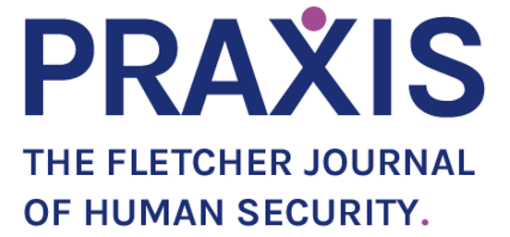The Perfect Crime Part 1: Everything you think you know about human trafficking is probably wrong
The Perfect Crime Part 1: Everything you think you know about human trafficking is probably wrong
By Avery Closser
Have you ever been in a rest stop or airport bathroom and noticed a subtle flyer taped to the back of the door that reads: “GET HELP. If you are a victim of human trafficking, call this number”? If you identify as a woman, then your answer is probably yes. If you are a man, you might have a different answer. Victims of human trafficking are often transported along the same trade routes as other commodities, both licit and illicit ones, which is why these hotline numbers are posted along popular travel routes. It may seem unlikely, though, to find a trafficking victim in a rest-stop bathroom. We might wonder, wouldn’t their abductor be more careful than to take them somewhere in public? Or wouldn’t it be obvious to us that they were in trouble? The answer to both questions is no. Human trafficking, or modern slavery as it is often called, is highly pervasive and invisible. It is extremely difficult to detect and monitor, and most traffickers carry on with impunity. Human trafficking awareness campaigns are often trumped by pop culture depictions, like in the 2009 film Taken, which portrays a father, played by Liam Neeson, rescuing his daughter from an international organized crime group attempting to sell her into a sex trafficking ring. Another prominent example is the recent sensational case of Jeffrey Epstein and Ghislaine Maxwell, both of whom were convicted for trafficking minors for sex. While this case underscores many features of human trafficking, (including proving that women can be responsible for trafficking other women, contrary to popular belief) it is highly unlike the vast majority of trafficking schemes. It is crucial to understand the enormity and complexity of these crimes to begin to conceptualize how to put an end to them.
In 2000, the Victims of Trafficking and Violence Prevention Act (TVPA) was passed by the U.S. government. It greatly increased public awareness of human trafficking and initiated the first significant anti-trafficking legislation on a national and global scale. The TVPA defines human trafficking as the “recruitment, harboring, transportation, provision, or obtaining of a person for…labor, services, or commercial sex, through the use of force, fraud or coercion.” In 2021, the International Labor Organization estimated that there are 28 million victims of modern slavery worldwide. Women and girls account for 65% of all victims. Four out of five victims trafficked for sexual exploitation are women and girls, which accounts for 6.3 million total people. However, non-sexual forced labor overwhelmingly makes up the remaining 21.7 million people. Because trafficking is scarcely reported or detected, especially forced labor, these numbers may inadequately represent the magnitude of the crime, creating more questions and more confusion about the nature of this crime.
Forced labor is the most common, yet most overlooked form of trafficking. Victims of forced labor are exploited across various economic industries, including construction, agriculture, fishing, mining, and domestic servitude. Domestic servitude is a widespread phenomenon that predominantly impacts women and girl victims, who are often exposed to extensive forms of violence, including sexual, physical, and psychological abuse. Despite a significant number of victims being trafficked for forced labor and the severe forms of physical and emotional harm it causes, it remains grossly undetected. This is particularly true in regions or sectors with minimal labor inspections or law enforcement presence, such as fishing or mining industries, where the victims are largely isolated or invisible. Moreover, due to the covert nature of this crime it is severely overlooked in comparison to sex trafficking, which is featured widely in popular media and is often conflated with human trafficking more broadly. Popular media also frequently depict sex trafficking or slavery as synonymous with prostitution, which not only implies agency but also carries a stigma which makes it extremely harmful to prevent non-voluntary sex work. In instances of sex trafficking, victims are almost always being held against their will: they are usually unpaid or are forced to use their income to pay off their “debts.” Furthermore, they are commonly controlled by various forms of physical and psychological violence and abuse.
Other less common forms of trafficking include forced marriage, organ removal, and the exploitation of children through child soldiering and begging. Nearly 12% of all trafficking victims are children; however, in some regions in Africa and South Asia, children make up almost 100% of all victims. In low-income countries, children are predominantly trafficked for forced labor, while in high-income countries they are mostly trafficked for sexual exploitation, begging, or forced criminality, such as drug trafficking. Worldwide, most child victims are trafficked for sexual exploitation, making up 72% of girls, followed by forced labor, which accounts for 66% of boys. Children who are victims of these crimes have been trafficked or forced into sex work without their consent and deserve the same level of attention as every other victim of such heinous crimes.
Many incidents of human trafficking occur across international borders; however, most trafficking cases are domestic or intra-regional, meaning people with the same nationality are typically victims of trafficking. This contradicts widely held beliefs that traffickers, particularly in the U.S., are dangerous foreign criminals. However, long-distance trafficking does occur, with Asia being the primary sending region for trafficked victims, and Europe being the top receiving destination. The majority of cross-border trafficking cases account for labor trafficking, as victims are typically lured by false advertisements for high-paying job opportunities.
Victims of human trafficking often have one thing in common: vulnerability. Certain populations may be at a heightened risk due to their vulnerable status, including low-income communities, homeless people, LGBTQ+ individuals, people with addiction or mental illness, and immigrant communities, many of which are regrettably underrepresented in trafficking discourse. In high-income countries, traffickers often target young women and girls for sexual exploitation by taking advantage of their vulnerable situations, including substance abuse, socio-economic deprivation, or unstable family dynamics. Moreover, children who are targeted often come from dysfunctional families, extremely poor households, or have been abandoned. altogether. In some countries, if child labor is culturally condoned, it is easier to exploit children when families are accustomed to sending them away from home to work. In these instances, the line between voluntary labor and child trafficking becomes blurred. Traffickers also take advantage of undocumented immigrants, using their fear of deportation to threaten and exploit them. In other cases, traffickers pose as human smugglers promising to lead migrants across borders to safety, yet when they arrive, they are forced into debt bondage or slavery. Undocumented victims of trafficking are additionally vulnerable because they lack the protection of U.S. labor and employment laws, thus their exploitation goes unnoticed and unpunished.
Although films like Taken feature extremely dramatic kidnapping scenes, human trafficking recruitment is actually quite complex, strategic, and employs a wide range of tactics. The illicit sex industry recruits victims using false advertisements for modeling agencies, pre-established sex work networks to entice potential victims, pornography, abduction, or selling individuals by family members, friends, or partners. In many international labor trafficking cases, agencies recruit workers by advertising work in a variety of industries, and then deceive victims by deducting wages to cover mysterious fees, including official documents, transport, housing, and other services. Few trafficking cases found violence to be used as a recruitment tactic. The most common tactics are deception through false job advertisements and feigning friendship or romantic interest. Moreover, most false advertisements are now easily accessible online, as are victims of sexual slavery and illegally harvested organs, which are similarly advertised on the internet. Online recruitment strategies employ hunting and fishing tactics; hunting involves the active pursuit and manipulation of a victim, typically on social media, whereas fishing waits for victims to respond to ads posted online. In one example, approximately 100 women were forced into sexual exploitation after applying for what they believed were overseas modeling jobs. The impact technology has had on the trafficking industry has contributed to its prosperity and invisibility and cannot be understated.
Research conducted on public opinions on human trafficking reveals that the public overwhelmingly believes that human trafficking victims are always female, are undocumented immigrants, and involve the threat of physical force as well as movement across borders. These beliefs are highly untrue and highlight the alarming misunderstanding of human trafficking. The nature of these crimes is much more complex, strategic, and pervasive than is commonly assumed, and may be occurring right under our noses.

ABOUT THE AUTHOR
Avery is a first-year MALD student at Fletcher studying Human Security and Gender and Intersectional Analysis, with a focus on migration and gender dynamics during and after conflict. Prior to starting at Fletcher, Avery worked for an Immigrant Rights Organization in Tacoma, WA, the UN Food and Agriculture Organization in Colombo, Sri Lanka, the World Affairs Council non-profit in Seattle, WA, an intellectual property law firm in Seattle, and, lastly, the Bill and Melinda Gates Foundation. Avery graduated from the University of Puget Sound with majors in International Political Economy and Spanish, and a minor in Latin American Studies.

